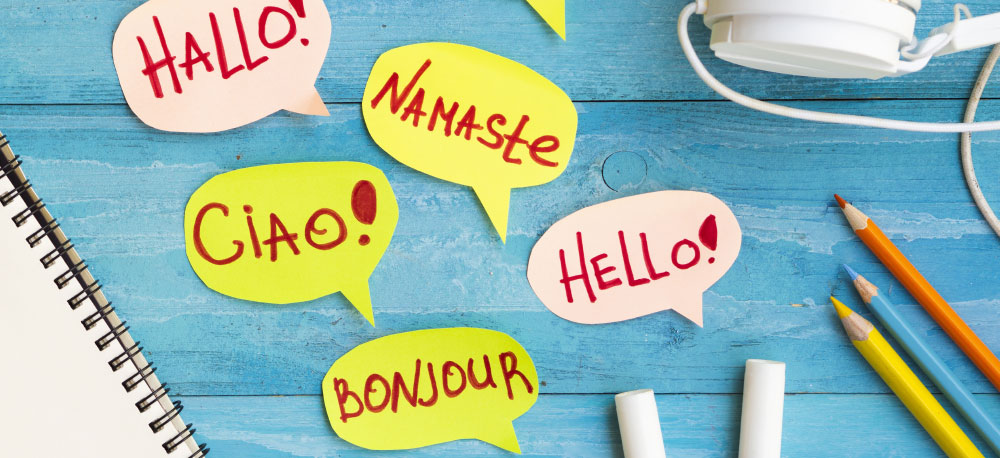We offer the best practice language translation process with a work process carried out by native-speaker translators, and we are known for excellent, customizable and optimal translation process flow.
Process Flow
Standard translation
process flow created by
native-speaker
translators
Excellent and optimal translation
work process flow
Translation
Process Flow
Translation is done methodically in pre-defined steps. So, the whole translation process has a scientific basis though itself in the translation. The various steps involved in the process of translation are listed below as they occur in the sequence of the translation process.
A standard translation process is initiated by connecting with the client and understanding the requirements. The client briefs the team, on the scope of a translation process. They clearly lay down what they want to include in the translation. So all the client requirements are jotted down and the process of translating the document, website, web app, or whatsoever is the object of translation, begins in the earnest. The basic structures required during translation are defined clearly and succinctly. The definition includes structuring the glossaries, word count, timelines and the project rules. Based on these details, a weekly schedule is prepared and the workload is assessed, which further defines the translation schedules, which are hence converted into a quotation, and handed over to the client for approval. Once the client approves the quotation, the work for the translation begins. A project manager is assigned for the translation job, who is responsible for any further steps, and the best-practices are followed until the translation process is finally completed.
The Project Manager is in-charge of the project and takes up all the responsibilities thereafter. He assigns the roles to the project members and prepares the project kit. The project kit that is once prepared, contains all the pertinent information about the project from its source, till the sink, when publishing the content takes place. At this stage, all the relevant problems are identified and the client is notified about them. The client is requested to clarify the issues, so that the work on the project could begin. Once the issues are rectified, the work for the translation proceeds further. The project kit is distributed among the translators, editors, creative writers, proof-readers and quality assistants who starts working on the project. It is at this time, the training is provided to those involved in the project, With eyes set towards the goal, the members are encouraged to forge ahead with the work. Towards the end of the phase, the glossary of terms related to the project is revised and made ready for the submission.
In the third step, the actual translation begins, with all the translators working on the project files. By consulting about the glossary and other key items in the project kit, the translators try to finish the work according to the agreed time-line. Once the translators submit the translated files, the proof-readers take over the project to find any lapses of reason, language, logic and whether the information is pertaining to the culture. The task of the proofreaders is to prepare a review report, which is to be accessed by the client. Once the comments of the proofreaders are noted and clarified with the client, the client suggests their modifications, if any. The modifications are made in the text. Once everything is done, the final report is prepared and is passed on to the quality control, who will check for the quality of work, by referring it to all the pertaining data available.
The final step involves the delivering of an art. The various steps involved in the process of translation are listed below, as they occur in the sequence of the translation . The text is compared to see for a perfect glossary, and with other key things such as the accuracy, consistency and the culturally appropriate functionality. Then comes the formatting. After the punctuations & grammatical checking has been approved, everything will come to an order. At the end, comes the delivery of the product to the client, who hopefully would approve the good work, when all the steps have been taken seriously and followed earnestly.
Quality process flow-
how to measure the
quality of translation?
Before delivering the translated text, the quality process must be initiated to measure the quality of translation. The proof of the quality assurance check is sometimes demanded by clients, and it can be furnished with QA tools.
Quality assurance Vs
Quality control
Though assurance and quality control may sound similar, they are actually quite different from each other. Both of them should not be confused.
Quality assurance is the process initiated during the translation phase before delivering the work to the client. After which the quality control is performed and checked whether the deliverable documents are measured, to see how good is the translation.
The Measurement of Translation Quality
The translation quality can be measured by the following methods:
1. By cross-checking with the project details. The project kit contains the details pertaining to the project, which can be double-checked, whenever the quality needs to be assured. The CAT tools are usually helpful in word count, checking the spelling errors, punctuation and grammar etc.
2. Cross-checking with the associated resources of the project, to figure out if there are any discrepancy in the requirements and other briefs.
3. Understanding the requirements and thoroughly following the summary of the project.
4. Proofreading is the activity, which is much stressed in the translation. It checks for the punctuation errors, inconsistencies, ambiguities and obscure phrases.
5.Using a QA tool can remarkably improve the quality of translation. The most frequently used QA tools are SDL Studio Trados, MemoQ and Xbench.
6. Relying on the sharp eye of the project manager and their knowledge of the languages.
7. Reviewal by the client, can help to improve the quality of the document, to a greater extent.





